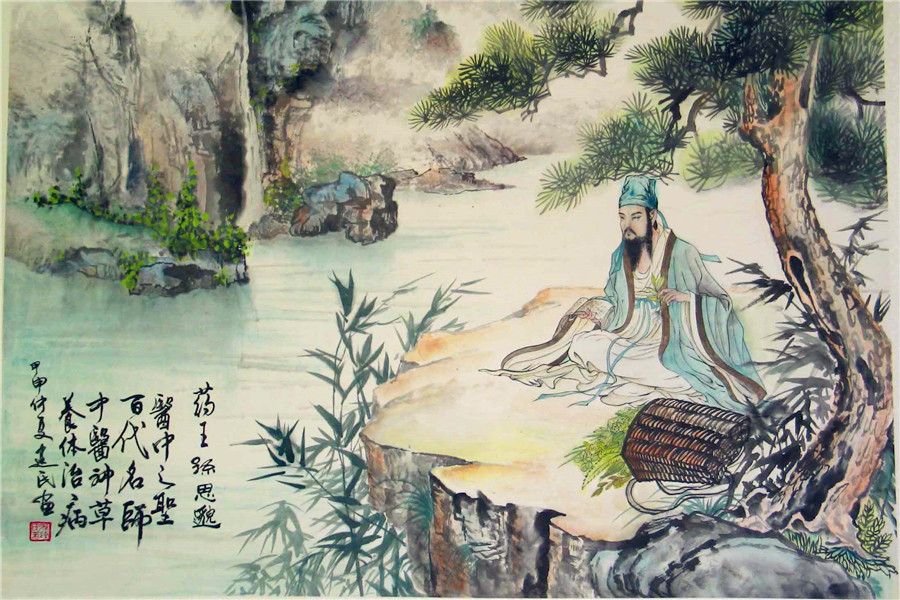Today a pound of smokeless gunpowder generally costs $25 in the United States, which would be enough for around 175 rounds in a hunting rifle. But we’re looking back to an era when gunpowder was so new and so unlike anything that had come before it that it could be mistaken for a deadly miracle. We shall trace this seeming deadly miracle of saltpeter (aka potassium nitrate), sulfur, and charcoal from its place of origin through the ways it first reshaped whole nations and belief systems. As we’ll soon see, much of the emergence of gunpowder is shrouded in mystery as thick as the clouds of smoke under which it has covered battlefields.
10. The Purple Light
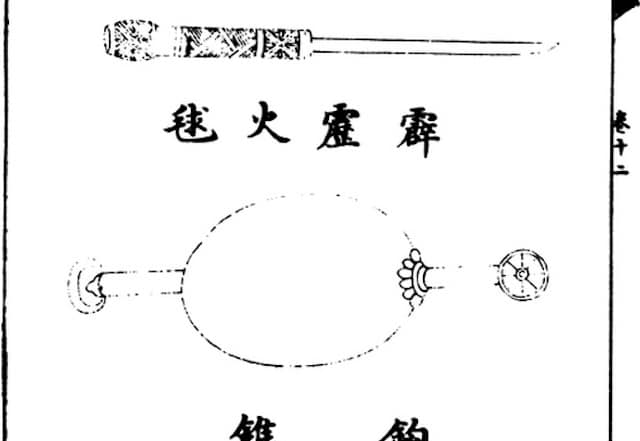
The effort that created gunpowder began as a program to create immortality elixir during the reign of Emperor Wu Di of the Han Dynasty. Long after they missed the very literal deadline for the Emperor in 86 BC, Taoist alchemists continued their experiments of isolating and combining elements. One of the most significant was in 142 AD when saltpeter, which comprises 75% of standard gunpowder recipes, was identified. It was first revealed to have notable qualities as a combustible in 492 AD. Alchemical experiments showed that when it was set aflame, it burned purple. This allowed for purification with a speed and accuracy that made mass-production of gunpowder practical.
Unsurprisingly, the transition from saltpeter as a novelty form of light to the crux of a fearsome ammunition would take time. The earliest recorded use of gunpowder would be in the mid-800s AD, and even that’s an approximation. Gunpowder formulas wouldn’t be recorded in any firmly dated document until 1044 AD with the Weijong Zongyao. This speed of developing technology is something to consider for those who complain that it’s taken over 100 years to get from the mass production of cars to flying cars.
9. Trade Secret
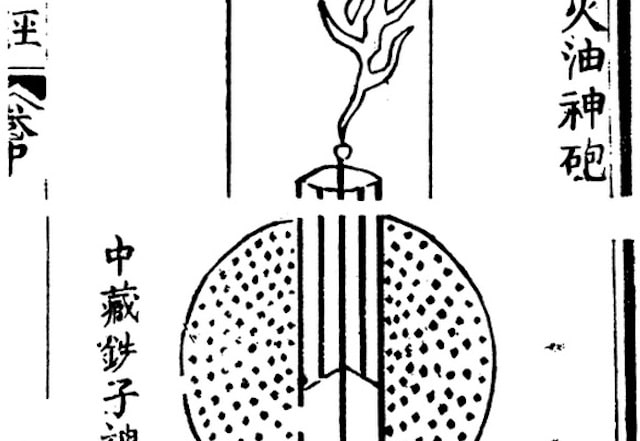
Even though early Chinese military minds primarily could only use gunpowder as a means of psychological warfare against invaders from the north with essentially bamboo firecrackers, the Song Dynasty fully understood the potential for gunpowder. To that end, in 1076 they outlawed international sale of saltpeter. Considering that the secret to producing silk fabrics had leaked centuries earlier after roughly a millennium of effort, maintaining the secret was demonstrably a vain hope.
For centuries the greatest potential threat to China in terms of the secret to gunpowder getting out was India. While the Himalayas largely functioned as a barrier from preventing wars between the dynasties, Indian militaries with gunpowder could have been extremely threatening to nations like Tibet, and such an expansion could at least have increased tensions. After all, the Indian subcontinent has a large amount of saltpeter, so much so that it was a large export to Europe during the Colonial Period, and could have created a fearsome arsenal. Fortunately for China, Indian physicians had long ago discovered saltpeter’s use as a food preservative and medicine, so it’s potential as an explosive went unexplored until the secret was already being leaked everywhere.
8. The Inventor?
So who was the alchemist responsible for the scientific breakthrough heard round the world? It turns out there are a number of candidates and that they’re from very different time periods. First off there’s Wei Boyang, whose 142 AD text “Book of the Kinship of the Three” describes how combining three powders will create a compound which will “fly and dance.” While that certainly sounds like the combination of saltpeter, sulfur, and charcoal that produces black powder, he didn’t name the components or even necessarily claim that he invented it.
Another candidate is Ge Hong. In 300 AD, he was recorded as mixing the correct components to produce gunpowder. This was alongside such efforts as those described in his Daoist classic Baopuzi towards walking on water and raising the dead. However, possibly because the identification of saltpeter through purple light was not yet known, gunpowder was not brought into large scale production during his lifetime, and so it seemed development of the technology stalled.
Yet another candidate is Sun Simiao, a man who is also celebrated as one of the giants in the field of medicine in ancient Chinese history. In the 7th Century AD, he was recorded as combining the necessary saltpeter and sulfur ingredients on his stove before adding locust tree shavings. Allegedly though, even if Simiao really did rediscover the concoction, his gunpowder was nowhere near potent enough to work as an propellant, and it was his followers who refined gunpowder well enough to weaponize.
7. First Recorded Use of Gunpowder in Battle
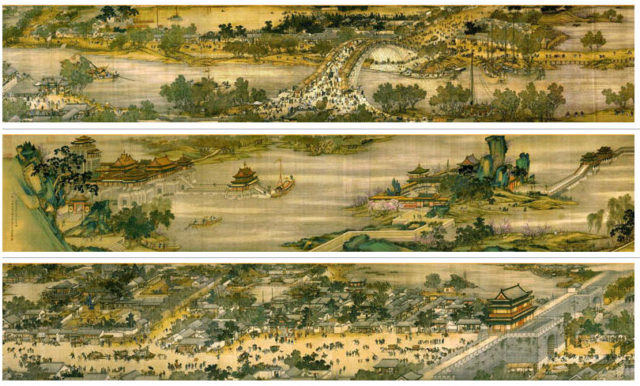
Although archaeology indicates that weapons such as “fire lances” (i.e. rockets with a single stick on them to act as rudders) were used by the Chinese troops against invaders as early as 904 AD, the first recorded battle of name where gunpowder was brought to bear was in 1232 at Kai-Keng. Five years after the death of Genghis Khan, the Jin Dynasty was one of the few forces in China in a position to resist the Mongols, and their armies were driven into the capital of Kaifeng. Among them was a Jin scholar, whose detailed account is the reason we know so firmly that the Jin Chinese troops were using rockets.
It seems as if for all his thoroughness, the scholar couldn’t help but propagandize his records. He reported that the rockets were so devastating that their explosions could be heard for 15 miles in every direction and they would devastate everything within 2,000 feet. Such capabilities derived from how they contained both an iron combustion chamber to store extra gunpowder in and extra iron shrapnel. However true these claims were, the weapons were not sufficient as ultimately the Mongols won the campaign in 1233.
6. Mongol Pilfering
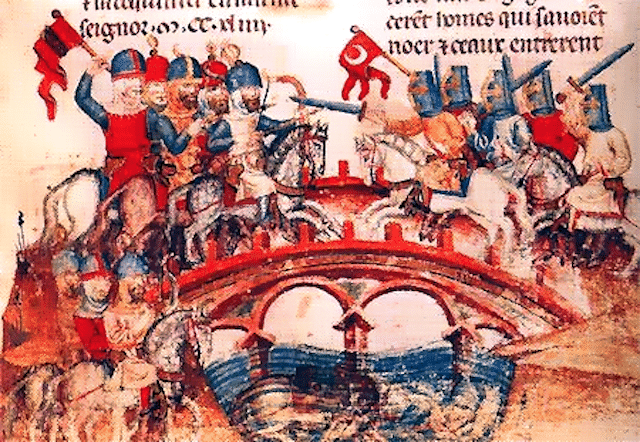
Always ready to copy a good idea after it was used against them, Mongols quickly adopted gunpowder for their own use. Within a decade of Kai-Keng, Mongols would be firing them at Europeans in Hungary during the Battle of Mohi in 1241. Considering that the European army was largely situated inside defensive formations composed of circled wooden wagon trains, they could only have been more accommodating as targets for flaming explosives if their troops all wore dry straw armor. The Mongols enjoyed equal success in using gunpowder weapons during the singularly horrific siege of Baghdad, but their ceramic grenades were insufficient for the attempted conquest of Japan.
The Mongols ended up spreading gunpowder and consequently the knowledge of how to create it to all the other major powers in the known world, particularly to Europe. Considering the effort that the Chinese government had put into keeping it secret for most of a millennium at that point, it was practically a final inadvertent act of spite.
5. The Cryptic Roger Bacon

The first European to record a gunpowder formula was a British monk. A Renaissance man long before the Renaissance, Roger Bacon studied philosophy, astronomy, music, and most importantly for our purposes here, chemistry. The teachings of French scholar and experimental science advocate Peter de Maricourt were heavily influential on his decision to get a laboratory of his own, and it was in 1242 that he became the first European to record the standard black powder recipe. As if that wasn’t impressive enough, it was done while he was still a student.
Despite his relatively dry, academic-sounding life, Bacon’s discovery was fraught with controversy and trouble. For one thing, Bacon wrote out the formula in a Latin cryptographic anagram, as was a regular practice of his. Some sources claim this led to widespread attacks on Bacon that his scientific writings looked like witchcraft, and his gunpowder formula which he said would “create thunder and lightning” sounded suspiciously like a magic spell. Whether it was for that or his other conflicts with the clergy, history is clear that that church had him imprisoned for years.
4. The Gun Monk

The life of the German monk Berthold Schwartz is much less well-documented than that of his British counterpart. The standout facts include that he lived for a time in Ghent, Belgium, taught at the University of Paris, and was a cathedral canon. There’s debate among historians whether his name Schwarz (“black”) refers to his habit, experiments he made in the black arts as an alchemist, or even if it referred to the powder he helped popularize. On one matter historians agree.
He cast the first cannon in European history and thus is credited with inventing them for European purposes. While cannons had been used in the Middle East since as early as 1260 by the Mamluks in their battles against the Mongols, Schwarz had made his bronze model in 1313. He was also credited with the invention of firearms. Within decades, Germany would have mills devoted to producing gunpowder, such as the Augsburg mill that started in 1340 and the Spandau mill from 1346, spreading the fruits of Schwarz’s labor to every corner of Europe.
3. European Debut
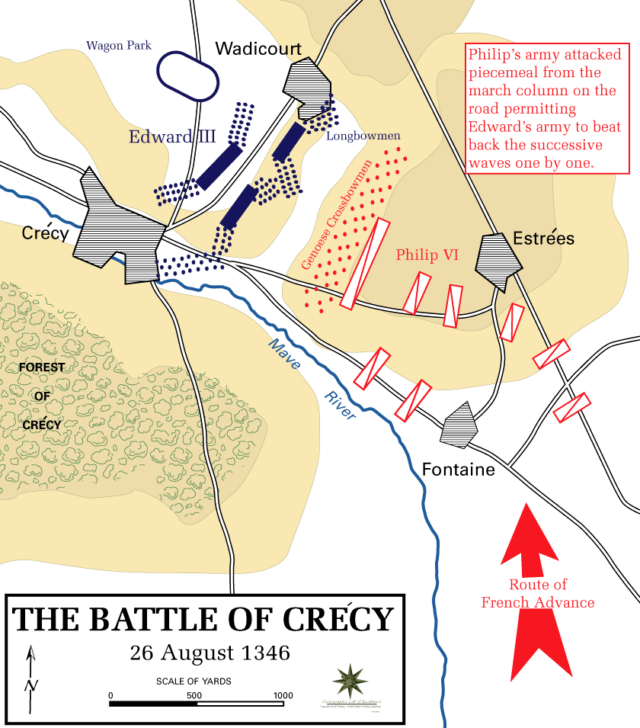
It took a little over a century between Bacon writing that anagram and a recorded use of gunpowder on a European battlefield. That was the landmark Battle of Crécy in 1346, where 13,000 British troops soundly defeated an army of 40,000 French soldiers and gave the British the initiative for the opening decades of the 100 Years War. The role of cannons in the British victory was massively overshadowed by the performance of Welsh longbows against the Genoese crossbowmen and French knights, although a lack of coordination in the French attacks and advantageous terrain for the British were also highly significant contributors.
Speaking of those Genoese crossbowmen, they were perhaps the least fortunate of any group of soldiers in the French army at the battle. They were the first ones in range of the longbows, and thus they received some of the heaviest volleys. Additionally, they were the first troops to experience a volley of British artillery. The cannons were naturally quite crude at the time, to an extent where they couldn’t even be aimed to fire downhill. Still the crossbowmen didn’t know exactly what they were up against, and between the thunderous din and the rain of arrows they broke ranks in a rout. The commanders behind them interpreted this rout as cowardice, and ordered an attack that was as much on their own archers as it was on the enemy. Despite this calamitous beginning, over the course of the war the French armies would become quite adept at artillery and would win Castillon, the last major battle of the war, in large part through their use of cannons on English cavalry.
2. Catholic Opposition
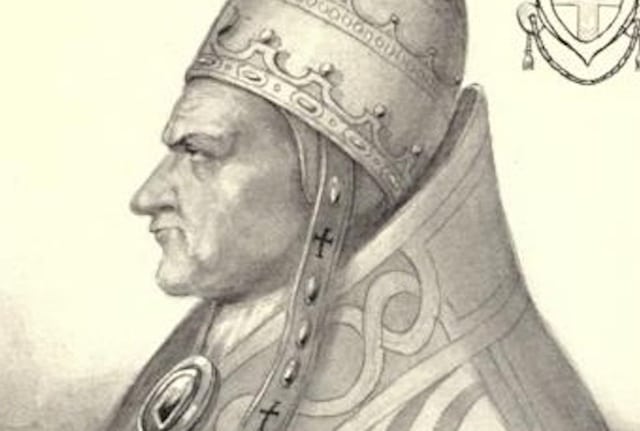
Despite the significant role that monks played in introducing gunpowder weapons to Europe, the church’s initial reaction was to attempt to ban those arms in the late 13th Century. This was hardly unprecedented, as in 1139 there was an attempt by a sect of the church to ban the crossbow. And as with that earlier law, despite the pervasive power of the church many European militaries simply opted to ignore the ban. Even back then and with religious backing, gun laws seemingly weren’t that effective.
The clergy’s opposition didn’t last long. By the reign of Pope Pius II in the mid-15th Century the Vatican was collecting its own firepower. If for no other reason, the success that the Ottoman Empire was having blowing holes in the walls of Christian cities put that squeamishness to rest, particularly the sacking of Constantinople in 1453. If anything, there was actually more opposition among the common people, with written accounts by soldiers accusing guns of being of the devil.
1. The Daredevil Noble
Although in most histories of gunpowder China ends up being relatively sidelined after the Mongols invade, we can’t go without mentioning the story of Wan Hu, quite likely the wackiest moment in the history of black powder. In circa 1500 AD, the minor nobleman decided to fly into space. He attached two kites and 47 rockets to a sedan chair. Servants lit 47 fuses as much in sync as they could, then ran away while Wan Hu presumably sat in the chair in anticipation.
By some accounts, the rockets tore apart the chair through flying wildly in numerous directions. When the Discovery Channel program Mythbusters attempted to recreate the experiment, the entire contraption merely exploded from the rockets being in too close proximity. Hopefully for Wan Hu it was the former, as the second does not sound particularly survivable. Either way, there’s no version of the story where he gives it a second try.
Dustin Koski co-authored Return of the Living, an explosive novel about the haunted future of Earth.
